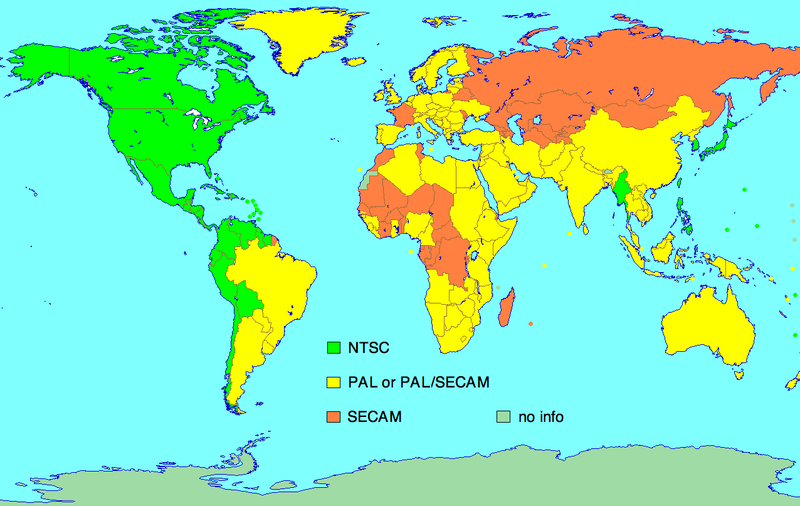Your video digitized
Digitizing images and sound to preserve your memories for the future
NTSC conversion of video
If you have NTSC or SECAM videotapes and want to watch them on your current PAL television system, do not hesitate and have them converted at UwFilmDigitaal. Read below how the world is divided between the PAL, NTSC and SECAM system. Have your NTSC video converted to digital format.
Since the introduction of television, different ways in which the image is displayed and later recorded have been chosen in different parts of the world. Mainly 3 systems are widely used namely PAL (yellow) and NTSC (green) system. The SECAM system (orange) is also used in quite a large region.

World map of Video systems (PAL, NTSC and SECAM)
The PAL system is indicated on the world map with the color yellow. The NTSC system is indicated by the color green. The SECAM system is indicated by the color orange.
The NTSC system is a video format that is mainly used in North, Central and partial South America. The PAL system is used in Europe, South Asia, Australia, New Zealand and large parts of Africa. There is also the SECAM system that is used in France, North Asia and parts of West Africa.
If you have family in the NTSC areas, such as Canada, USA, Antilles, Suriname, Aruba, the video recording must first be translated to the PAL system. However, if you want to send over your own recording from the PAL system, it must be translated to the NTSC system. We can convert video recordings made on an NTSC machine to PAL format for you and immediately deliver them to a digital medium.
The PAL system has 576i (625) horizontal picture lines, while NTSC has 480i (525 lines). In addition, the number of images per second is also different, namely PAL 50Hz (25 frames/ sec.) and NTSC 60Hz (30 frames/ sec). The ‘i’ stands for interlaced, which means that image lines were described alternately. For PAL first 25 odd lines and then 25 even lines and for NTSC first 30 odd lines and then 30 even lines.
Playing an NTSC recording on a PAL machine gives a large, imageless band at the bottom of the video and the sound (the audio) is often missing.
Video recordings in the PAL system can be directly translated to the NTSC or SECAM system. Images are added or removed in order to arrive at the relevant number of image lines.
